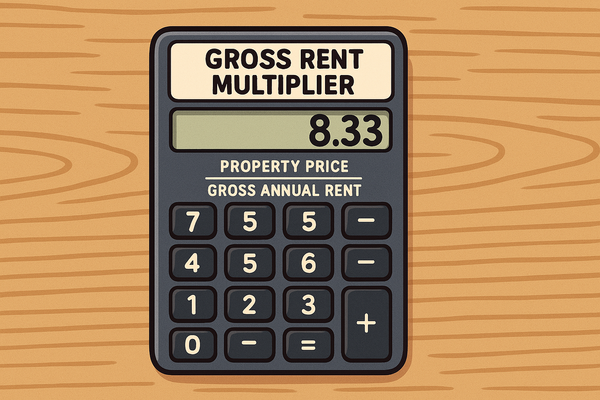Oklahoma Squatters Rights Guide: Understanding Adverse Possession Laws
Required occupation period: 15 years in Oklahoma, without significant interruptions and 5 consecutive years of paid property taxes

From a $180,000 rental loss resulting in a litigation nightmare, to an adverse possession claim of 80 acres out of a 100-acre family inheritance, Oklahoma property owners have faced shocking consequences from adverse possession claims and squatter situations.
While Oklahoma's 15-year statutory period offers some protection, the state's unique "Fence Law" provision and evolving legislation make understanding these laws essential for anyone who owns real estate in the Sooner State.
This comprehensive squatters rights guide examines Oklahoma's adverse possession framework, prevention strategies, and legal remedies to help property owners protect their investments from unauthorized occupants.
Introduction to Squatters' Rights in Oklahoma
- Trespasser vs Squatter Definition: In Oklahoma, squatters are unauthorized occupants who enter and reside in a property without the legal owner's permission, while trespassers are individuals who enter property without permission but don't claim any property rights.
- Adverse possession: A legal doctrine allowing individuals to claim legal ownership of property after occupying it for a specified period under certain conditions.
- Why understanding matters: Oklahoma property owners need to understand these laws to protect their private property from potential squatters and adverse possession claims.
- Historical purpose: Adverse possession laws originated to ensure productive use of land and resolve boundary disputes during America's westward expansion, particularly relevant in Oklahoma's land run history.
Squatter Snippet: Real Case from Oklahoma
In 2022, David Yonce of Mounds, Oklahoma, entered into a cannabis business venture with someone he considered a close friend. As part of their arrangement, Yonce rented a home on his property to his business partner for $5,000 per month. After a few initial payments, the friend stopped paying rent entirely.
Three years later, in 2025, the unpaid rent had accumulated to an astonishing $180,000, and Yonce found himself unable to easily remove his former friend from the property due to legal complications. Without a formal lease agreement separate from their business partnership, what began as a legitimate tenancy had evolved into a squatter situation, leaving Yonce with limited legal remedies beyond a lengthy lawsuit.
"The whole thing was a con from the beginning. They were just trying to get access to the property to live here," Yonce explained to local media, highlighting the importance of proper documentation even when dealing with trusted individuals.
Key Timeline: Statutory Period in Oklahoma
- Required occupation period: 15 years in Oklahoma
- Continuous possession requirement: Occupation without significant interruptions
- Comparison with neighboring states:
- Timeline exceptions:
- Military service
- Legal disability (underage, imprisoned, or legally incompetent individuals have 2 years after disability lifts to reclaim property)
Adverse Possession Timeline Comparison
| State | Required Years | Special Conditions |
|---|---|---|
| Oklahoma | 15 years | Payment of property taxes for 5 consecutive years; color of title requirement |
| Texas | 10 years | 5 years with color of title and tax payments |
| Kansas | 15 years | No special requirements |
| Arkansas | 7 years | Must have color of title and tax payments |
| Missouri | 10 years | No special requirements |
Quick Guide for Property Owners
Oklahoma's adverse possession laws create a substantial but navigable framework for property owners. With a 15-year statutory period and additional requirements like tax payments, successful adverse possession claims are rare but not impossible in the Sooner State.
The Oklahoma Supreme Court case Amoorpour v. Kirkham (2023) demonstrated the court's strict application of continuous possession requirements, reinforcing that intermittent property use, even over many years, is insufficient for adverse possession claims.
Senate Bill 1704, introduced in February 2024 by Senator George Burns (R-Pollard), could significantly strengthen property owners' rights by preventing adverse possession claims if the owner has paid all property taxes during the possession period.
If passed, this legislation would effectively neutralize many potential adverse possession claims through a simple method for property owners to maintain their rights.
- Know your timeline: Squatters can attempt to claim rights after 15 years of continuous occupation in Oklahoma
- Documentation matters: Keep property records, tax receipts, and inspection logs to prove ongoing ownership
- Regular monitoring required: Vacant properties and rural land are most vulnerable to unauthorized occupants
- Legal obligation: Self-help eviction methods are illegal in Oklahoma; proper court procedures must be followed
- Act quickly: The longer squatters remain on your property, the stronger their potential claim becomes
- Proper notices: Follow legal procedures when removing unauthorized occupants to avoid legal complications
Prevention: Protecting Your Property
Oklahoma property owners face unique challenges when protecting their real estate from potential squatters and adverse possession claims. Court records show that rural properties with unclear boundaries are particularly vulnerable to adverse possession claims in Oklahoma.
A notable case involved Kim Moinette, who discovered that approximately 80 acres of her family's 100-acre inheritance in Adair County was being claimed through adverse possession, with the claimants successfully obtaining a temporary court order barring Moinette from accessing her own property.
Oklahoma courts give significant weight to evidence of regular property monitoring and maintenance when evaluating adverse possession cases.
According to Oklahoma Supreme Court precedent, property owners who can demonstrate ongoing monitoring and clear boundary maintenance are substantially more likely to defeat adverse possession claims, even when the property has been unoccupied.
- Regular inspections:
- Visit property at least quarterly
- Document each visit with dated photos and written logs
- Effective security measures:
- Secure all entry points with quality locks
- Consider alarm systems for valuable properties
- Install motion-activated lighting and cameras
- Clear signage:
- Post "No Trespassing" signs prominently around the property
- Mark property boundaries clearly with fencing where practical
- Property management options:
- Hire professional property management for vacant properties
- Consider short-term rental options for properties that would otherwise sit vacant
- Documentation practices:
- Keep tax payment records organized and accessible
- Maintain utility connections when possible
- Take dated photographs of property conditions regularly
- Record all interactions with anyone attempting to access your property
Property Risk Assessment Matrix
| Property Type | Risk Level | Recommended Prevention | Estimated Cost |
|---|---|---|---|
| Vacant Land | High | Boundary fencing, regular inspections, clear signage | $1,000-$10,000+ |
| Abandoned Building | Very High | Security system, property management, structural repairs, regular inspections | $3,000-$15,000+ |
| Seasonal Property | Medium | Security system, neighbor monitoring, deadbolt locks, motion lighting | $500-$2,000 |
| Investment Property | Medium | Professional property management, tenant screening, regular inspections | $1,000-$5,000/year |
Removing Squatters: Step-by-Step Process
Oklahoma's eviction process for removing squatters is governed by the Oklahoma Residential Landlord and Tenant Act and Title 12 of the Oklahoma Statutes. Unlike some states with expedited processes for squatter removal, Oklahoma requires property owners to use the standard eviction procedure even for unauthorized occupants.
A key distinction in Oklahoma law compared to neighboring states is the requirement for property owners to obtain a court order before removing squatters, with penalties of up to $100 per day for illegal self-help evictions (OS Title 41 § 123).
According to the Oklahoma District Court statistics, eviction proceedings involving adverse possession claims take approximately twice as long as standard tenant evictions, with an average timeline of 45-60 days compared to 21-30 days for routine cases.
- Document the situation:
- Take extensive photos/video evidence of occupation
- Gather property deeds, tax records, and other ownership documentation
- Issue proper written notice to vacate:
- 5-day pay-or-quit notice (if treating as unpaid rent situation)
- 15-day quit notice with 10 days to cure (for lease violations)
- Immediate unconditional quit notice (for illegal activity)
- File appropriate legal complaint:
- "Forcible entry and detainer" (FED) action in Oklahoma District Court
- Include all required documentation proving ownership
- Attend court hearing (usually scheduled 5-10 days after filing)
- If successful, obtain writ of execution (eviction order)
- Sheriff enforces removal after 48-hour notice period, not property owner
- What NOT to do:
- Do not change locks yourself
- Do not shut off utilities
- Do not remove squatter's belongings
- Do not threaten or intimidate
- Do not use physical force
- Do not enter property without proper notice
- Timeline expectations:
- Notice period: 5-15 days (depending on notice type)
- Court processing: 1-3 weeks
- Eviction enforcement: 2-5 days after judgment
Eviction Process Timeline
The Oklahoma eviction process for squatters is governed by Title 12 of the Oklahoma Statutes, specifically Sections 1148-1148.16, which establish the procedural requirements for forcible entry and detainer actions.
According to the Oklahoma Administrative Office of the Courts, the average processing time for FED cases involving adverse possession claims in 2024 was 32 days from filing to judgment, with certain Oklahoma City and Tulsa County courts experiencing significantly longer delays due to case backlogs.
Oklahoma law differs from Texas's expedited process for squatter removal, which allows for a shorter notice period of just 3 days in certain circumstances. Oklahoma property owners must follow the full statutory timeline, which provides important due process protections for all parties involved.
[Discovery of Squatter] → [Documentation: 1-2 days] → [Notice to Vacate: 5-15 days] →
[Court Filing: 1 day] → [Waiting for Hearing: 5-10 days] → [Court Hearing: 1 day] →
[If successful, Wait for Order: 1-3 days] → [Sheriff Enforcement: 2-5 days] → [Property Returned]
Total estimated timeline: 15-35 days (with possible extensions for complex cases)
Legal Requirements for Adverse Possession
Oklahoma courts apply the "OCEAN" criteria (Open, Continuous, Exclusive, Adverse, Notorious) with particular stringency compared to neighboring states.
In the landmark case Sears v. State Department of Wildlife Conservation (1976), the Oklahoma Supreme Court established that "every element of adverse possession must be established by clear and positive proof," placing a heavy burden on potential adverse possessors.
Recent Oklahoma case law, such as Amoorpour v. Kirkham (2023), demonstrates the court's continuing strict interpretation of these requirements, with particular emphasis on the continuous possession element.
The Oklahoma Supreme Court rejected Kirkham's adverse possession claim partly because "there are many breaks in the continuous statutory period," reinforcing that even minor interruptions in possession can reset the 15-year clock.
- Hostile/Adverse Claim
- Under Oklahoma law, "hostile" means occupation without the owner's permission
- Must be either under a claim of right or color of title
- Oklahoma courts have held that "mere naked possession or occupancy of the premises, no matter how long, without a claim of right or color of title cannot ripen into a good title"
- Actual Possession
- Physical occupation of the property
- Evidence includes building structures, farming the land, or otherwise using it in ways consistent with ownership
- Open and Notorious Possession
- Occupation must be visible to both the property owner and the general public
- No attempt to conceal the occupation
- Community awareness of the squatter's presence
- Exclusive Possession
- The squatter must possess the property exclusively, without sharing control with others, including the legal owner
- Must prevent others from using the property, as a true owner would
- Shared possession with the actual owner automatically defeats this element
- Continuous Possession
- Uninterrupted occupation for the full 15-year statutory period
- Temporary absences permitted but cannot abandon property for extended periods
- The entirety of the 15-year period must be established with clear evidence
Adverse Possession Requirements Matrix
| Requirement | Required in Oklahoma? | Evidence Courts Accept | Common Pitfalls |
|---|---|---|---|
| Hostile/Adverse Claim | Yes | Documentation of claim of right, color of title | Permission from owner at any point defeats claim |
| Actual Possession | Yes | Structures built, improvements made, active land use | Minimal or sporadic activity insufficient |
| Open & Notorious | Yes | Visible occupation, community witnesses, public use | Hidden or secretive occupation invalidates claim |
| Exclusive | Yes | Sole control, preventing others' access, fencing | Shared use with owner or others defeats claim |
| Continuous | Yes | Uninterrupted 15-year occupation evidence | Even brief abandonment resets 15-year clock |
Frequently Asked Questions
- "Can I remove squatters myself in Oklahoma?"
- No, self-help eviction is illegal in Oklahoma
- Property owners must follow legal eviction process through the courts
- "Do squatters have to pay property taxes in Oklahoma?"
- Yes, Oklahoma law requires squatters to pay property taxes for at least 5 consecutive years to support an adverse possession claim
- Tax payment must be in the squatter's own name rather than the legal owner's name
- "What's the difference between a squatter and a trespasser in Oklahoma?"
- Trespassers: Short-term unauthorized presence with no claim to property
- Squatters: Ongoing occupation with potential adverse possession claim
- Oklahoma law treats trespassing as a criminal matter, while squatting often becomes a civil issue
- "Who should I contact first in Oklahoma - police or sheriff?"
- For immediate safety concerns: Police
- For eviction enforcement: Sheriff (only the sheriff, not regular police officers, has jurisdiction to physically remove squatters after court proceedings)
- "Can squatters claim abandoned property in Oklahoma?"
- Yes, if all adverse possession requirements are met over 15 years
- Property is never legally "abandoned" in Oklahoma until this full period passes
- "How quickly can I evict a squatter in Oklahoma?"
- Typical timeline: 15-35 days from notice to removal
- Factors affecting timeline: court schedule, type of notice required, evidence quality
Decision Tree for Oklahoma Property Owners
Oklahoma property law makes important distinctions between criminal trespass and civil adverse possession claims. Under 2024 Oklahoma Statutes
Title 21. Crimes and Punishments §21-1835, criminal trespass can result in misdemeanor charges, but law enforcement typically requires clear evidence of forced entry or explicit warning signs before treating squatting as a criminal matter.
The Oklahoma County Sheriff's Office follows a specific protocol that requires verification of a valid court order before removing squatters, while the Oklahoma City Police Department typically refers squatter situations to the sheriff unless there's evidence of breaking and entering or other criminal activity.
Discovered Someone on Your Property
├── Emergency/Dangerous Situation? → Yes → Call Police
│ └── No ↓
├── Recent Entry (Less than 24 hours)? → Yes → Call Police (Trespasser)
│ └── No ↓
├── Evidence of Established Occupation? → Yes → Legal Eviction Process Required
│ └── No ↓
└── Uncertain Situation → Consult Attorney Before Taking Action
Recent Legislative Changes in Oklahoma
Oklahoma has seen significant legislative activity aimed at strengthening property owners' rights against adverse possession claims in recent years. Senate Bill 1704, introduced in February 2024 by Senator George Burns (R-Pollard), proposes substantial protection for property owners by preventing adverse possession claims if the owner has paid all property taxes during the possession period.
This bill is a refiling of Senate Bill 456 from the 2023 legislative session, with minor adjustments to address concerns raised previously.
Oklahoma Lt. Gov. Pinnell has expressed support for strengthening property owners' rights against squatters in Oklahoma, following the approach taken by the Texas Senate in recent legislation that significantly enhanced protections for property owners against unauthorized occupants.
- Recently Passed Laws:
- House Bill 3171 (2022): Clarified definitions of trespassing on commercial and residential properties
- Pending Legislation:
- Senate Bill 1704 (2024): Would prevent adverse possession claims if property owner has paid taxes.
- Senate Bill 128: This bill, introduced by Senator Julia Kirt, aims to extend the eviction summons timeline from five to ten days. The goal is to give tenants more time to resolve back rent issues and potentially avoid eviction.
- Multiple Eviction Reform Bills: Oklahoma legislators are considering multiple bills aimed at reforming the eviction process and lowering the number of eviction cases filed in the state.
- Legislative Trends:
- Oklahoma is following a national trend of strengthening property owners' rights
- Emphasis on tax payment as evidence of continued ownership
- Movement toward criminalizing certain forms of squatting
Oklahoma-Specific Considerations
- Color of Title in Oklahoma:
- Definition: Document that appears to transfer ownership but is legally defective
- Impact on statutory period: No reduction in time requirement
- Uniquely tied to tax payment requirement (after paying taxes for 5 consecutive years, a squatter can receive a title from a tax assessor)
- Burden of proof requirements:
- Oklahoma Supreme Court requires "clear and positive proof" of each element
- Significantly higher standard than in many neighboring states
- Documentation must be comprehensive and convincing
- Oklahoma's "Fence Law" Provision:
- Unique statute allowing potential transfer of ownership after a squatter erects fence boundaries and pays taxes for 5 years
- Creates an alternative path to adverse possession that property owners should be particularly vigilant about
- How Oklahoma differs from neighboring states:
- Longer statutory period (15 years vs. 10 years in many neighboring states)
- More stringent tax payment requirements
- Stronger burden of proof standards
Oklahoma vs. Neighboring States Comparison
| Factor | Oklahoma | Texas | Kansas | Arkansas | Missouri |
|---|---|---|---|---|---|
| Statutory Period | 15 years | 10 years | 15 years | 7 years | 10 years |
| Color of Title Impact | Required after tax payment | Reduces period to 5 years | No impact | Reduces period to 7 years | No impact |
| Tax Payment Required | Yes (5 years) | Yes (for shortened period) | No | Yes (for shortened period) | No |
| Special Conditions | "Fence Law" provision | Criminal penalties for certain squatters | None | None | None |
| Strictness Rating | 4/5 | 3/5 | 2/5 | 3/5 | 2/5 |
Advanced Legal Process
- Court proceedings: Oklahoma District Courts have exclusive jurisdiction over adverse possession and eviction cases
- Evidence requirements: Documentary evidence of tax payments, property improvements, and continuous occupation
- Potential outcomes: Quiet title action results, boundary adjustments, full property transfer
- Monetary judgments: Possible damages for unpaid rent, property damage, or legal costs
- Impact on property title: Successful adverse possession results in a new deed being issued
- Special provisions: Property owners with legal disabilities (underage, imprisoned, or legally incompetent) have 2 years after their disability is lifted to reclaim property
Real-World Examples
- Amoorpour v. Kirkham (2023): Oklahoma Supreme Court rejected adverse possession claim despite years of intermittent use because continuous possession requirement wasn't met
- David Yonce case (2025): Business partner turned squatter created $180,000 in rental losses and required complex litigation to remove
- Kim Moinette case: Family discovered adverse possession claim on approximately 80 acres of their 100-acre inheritance in Adair County, highlighting how absentee owners are vulnerable
Resources
- Current Oklahoma Squatters Rights Laws:
- Oklahoma Statutes Title 12, Sections 93-94
- Last updated: February 2024
- Recent/Pending Legislation:
- Oklahoma Senate Bill 1704
- Bill status: In committee as of March 2025
Legal Disclaimer
DISCLAIMER: The information provided in this guide is for general informational purposes only and should not be construed as legal advice on any subject matter. The content contained herein does not establish an attorney-client relationship.
This guide about Oklahoma squatters' rights and adverse possession laws is intended to provide general information and should not be relied upon as legal advice. Laws and regulations regarding property rights, adverse possession, and eviction procedures vary by jurisdiction and may change over time. The information presented here may not reflect the most current legal developments or address your specific situation.
No reader should act or refrain from acting based on information in this guide without first seeking professional legal advice. Property owners dealing with squatters should consult with a qualified attorney licensed to practice in their jurisdiction for advice tailored to their particular circumstances.
The authors, publishers, and distributors of this guide expressly disclaim all liability in respect to actions taken or not taken based on any or all of the contents of this document. They shall not be responsible for any errors or omissions in this information or any consequences arising from its use.
This guide is provided "as is" without warranty of any kind, either express or implied, including but not limited to implied warranties of merchantability, fitness for a particular purpose, or non-infringement.
Copyright © 2025 LandlordDoc.com. All rights reserved.





